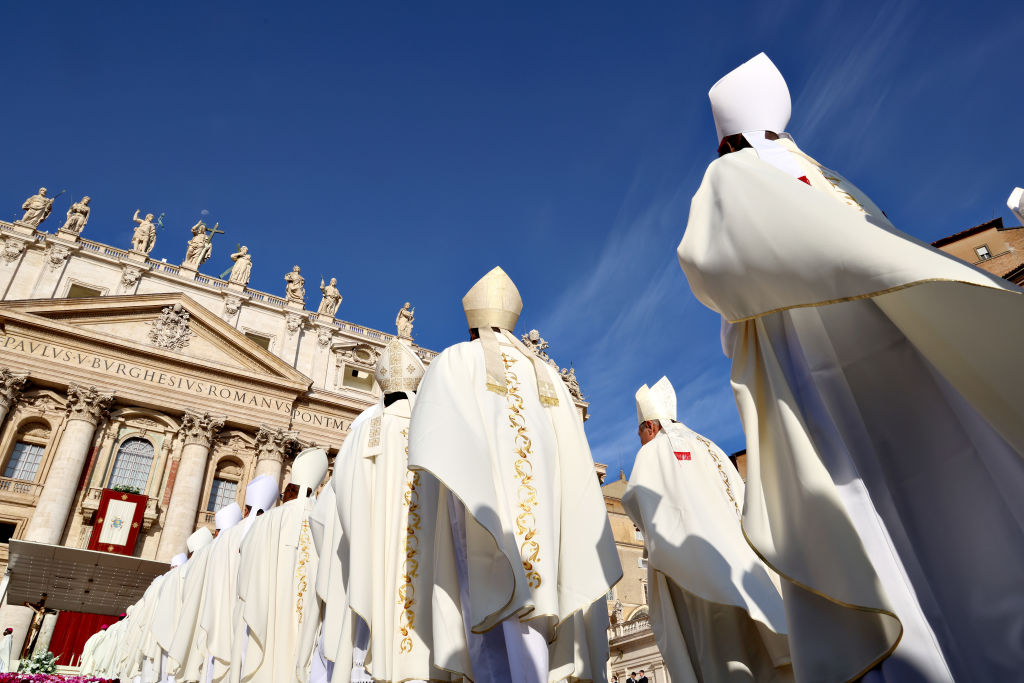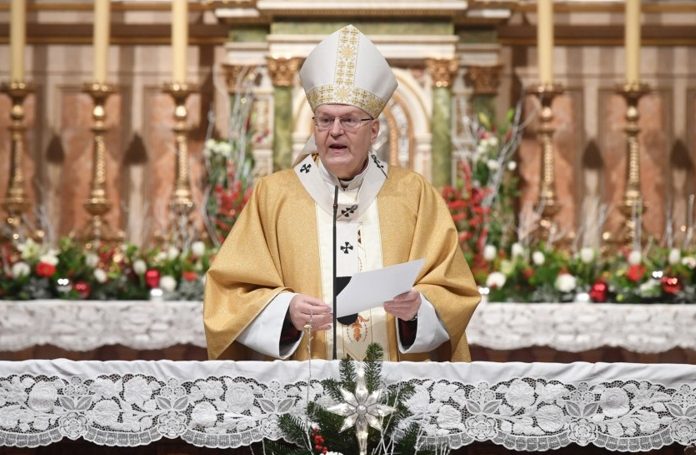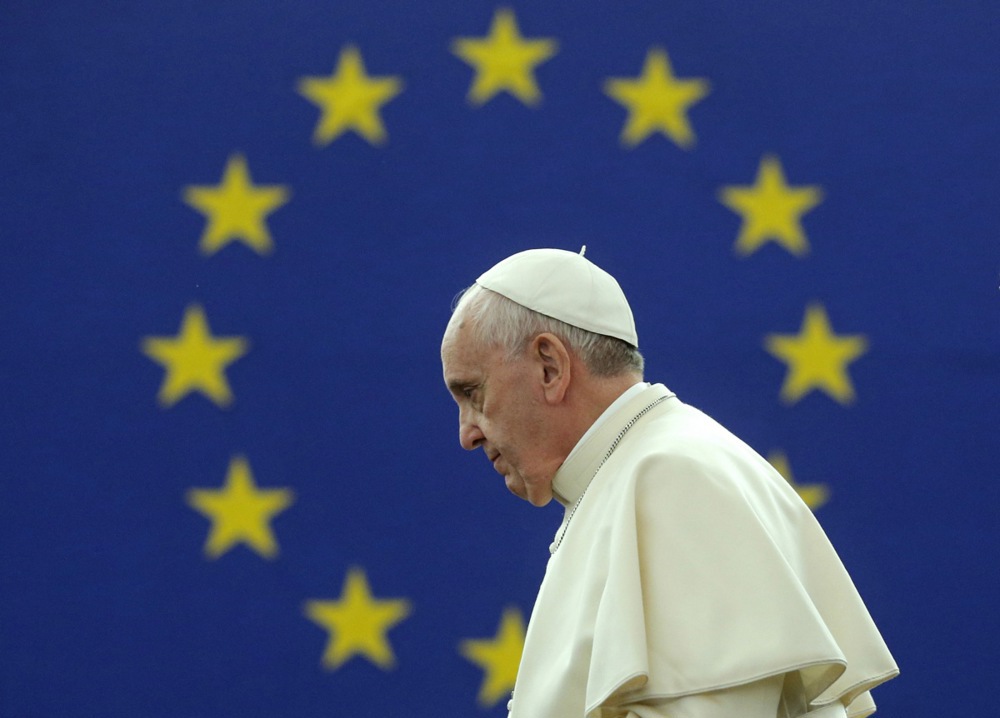Volodymyr Zelensky is a man who knows what he wants: air defence interceptors, artillery, ATACMS long-range precision-guided missiles, more Stinger anti-aircraft missiles, and any extra munitions that might be around for Patriot air defence systems.
The Vatican has another idea of what could be useful. Send a Cardinal.
Next month, the Pope is sending Cardinal Pietro Parolin, Secretary of State, to Ukraine. Parolin is a diplomat of 30 years experience whose assignments have taken him through Nigeria, Mexico, Venezuela, North Korea, Vietnam, with a loop through negotiations on the Nuclear Non-proliferation Treaty and the UN.
All of which is impressive, but you have to wonder if Zelensky will be looking at the figure flowing in scarlet silk and a serious ring to kiss and thinking, “Just what we need.”
Officially, the Pope is sending Parolin as Papal Legate for a celebration during the annual pilgrimage of Latin-rite Ukrainian Catholics to the National Shrine of Our Lady of Mount Carmel in Berdychiv.
War goes on (Berdychiv has taken some Russian hits), so do religious traditions.
The Vatican is riding both sides by sending Parolin. After the religious ceremony, the Cardinal, who is the most senior diplomat of the Holy See, is senior enough to have high-level meetings with President Zelensky. The Pope wants him to try to advance peace talks. The Vatican’s choice has its weight. But will it be effective?
Not if talks get as scratchy as they have before.
The Pope made it clear from his first attempts at negotiation that the priority must be a ceasefire. “War is always a defeat,” he keeps repeating. There are hundreds of calls for prayer for the “tortured Ukraine.”
Which is all right, except when the Pope seems more inclined to listen to Russia’s reasoning than to the reasonings of the attacked Ukraine.
Sometimes, these were perhaps naïve statements by the Pope, as when in an interview, he referred to NATO’s barking at Moscow’s gates.
But then these frictions by the Pope are covered by the Vatican’s diplomats, who are more cautious in their declarations. The Holy See’s foreign policy is managed by the Secretariat of State, and from the Secretariat of State, calls for a ceasefire, dialogue, and peace have always been accompanied by explicit references to Russian aggression and the integrity of Ukraine’s territorial territory.
The Pope and his diplomats are not in opposition. They are two sides of the same coin. Perhaps the Pope creates some problems with his extemporaneous statements, but the Holy See’s diplomacy continues to pursue its careful line.
That is a line that starts from a necessary assumption: there must be a dialogue between the parties. Thus, Cardinal Parolin did not fail to observe that at the High-Level Summit for Peace in Ukraine in Bürgenstock, Switzerland, the interlocutor necessary for peace, namely Russia, was missing. “It is a limitation of the conference,” Cardinal Parolin said.
Ukraine’s previous High-Level Peace Summit was held in Malta on 28-29 October. In that case, Cardinal Parolin had sent a video message.
At Bürgenstock, the Cardinal was there. The Holy See participated only as an observer, so his signature is not in the final communiqué.
However, there was an intervention by Cardinal Parolin at the end of the conference. In his speech, Parolin underlined that the only way to have an accurate, stable, and just peace is “dialogue between all the parties involved.” He also reaffirmed “the validity of the fundamental principle of respect for the sovereignty of every nation of the integrity of its territory.”
He also stressed that the Holy See is at the forefront of working to facilitate the repatriation of children and encourage the release of prisoners, “especially soldiers and civilians who have been seriously injured.”
The Holy See is also an observer in the International Coalition for the Repatriation of Ukrainian Children from Russia and keeps in direct contact with Russian and Ukrainian authorities through a mechanism created following the visit of Cardinal Matteo Zuppi to Kyiv and Moscow.
The mechanism for repatriating children appears to be working, albeit partially. The problem lies in the numbers: the Ukrainian count of children considered “deported” to Russia exceeds the Russian one, and Russians do not, and would never do, admit that these children were torn from their families.
At the moment, however, this humanitarian work is the only one that the Holy See has been able to carry out effectively. In his speech in Switzerland, Cardinal Parolin concluded: “The Holy See encourages nations and other members of the international community to explore ways of providing assistance and facilitating mediations, whether humanitarian or political.”
Yet there is great interest on the Ukrainian side towards the Holy See. Zelensky had a bilateral meeting with the Pope on the side-lines of the G7 in Borgo Egnazia on June 14.
On June 8, in a surprise trip prepared in just two days, the head of the Ukrainian Presidency Bureau, Andriy Yermak, landed in Rome for a series of institutional meetings at the Vatican, which included the Pope, Cardinal Parolin, and Cardinal Matteo Zuppi, the Pope’s envoy to Ukraine, Russia, the USA, and China, who received him even at 2 am.
Ukraine seeks the support of the Holy See for the peace formula proposed by President Zelensky; the Kyiv communication defines it as “the only just peace.”
Which is not quite in line with Vatican diplomatic efforts, so there is no shortage of tensions with the Catholic Church.
In April, for example, a new law from the Ukrainian Parliament called into military service priests between the ages of 25 and 60 who do not have disabilities and do not have children – the law also refers to Eastern Rite priests or Protestants, not only to Catholics of the Latin rite who are celibate.
It was said that the issue had been clarified with the Catholic Church and that the law was a way to prevent “fake shepherds” who took licenses from priests so as not to go to war. The law, however, has never been changed.
This example seems to demonstrate that even on the Ukrainian side, religion can be part of the conflict.
Cardinal Parolin’s trip next month, the details of which have not yet been announced, could therefore be very short, limited to the religious meeting and some high-level bilateral meetings conducted without too much fanfare.
If these characteristics were confirmed, the Holy See’s desire not to be pulled by any of the parties to the conflict would be demonstrated.
Of course, constant calls for a ceasefire favour Russian President Vladimir Putin rather than Ukraine. The Holy See, however, dismissed worries about image over this. Dialogue is a priority and, therefore, a just peace, they say. The Pope and his diplomat want dialogue — and with all parties involved.





Vatican prelates warn EU voters not to “isolate themselves”